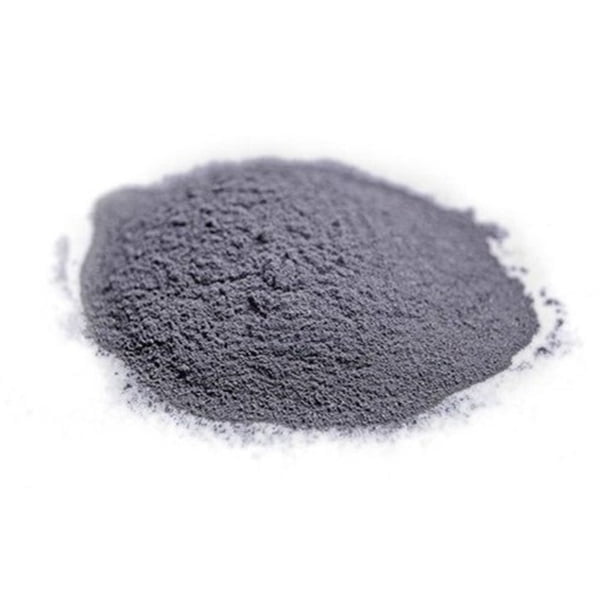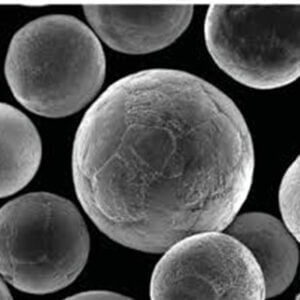What 3D Printing Devices Can Be Used for Rapid Prototyping?
Table of Contents
Imagine this: you have a revolutionary idea for a new gadget, a product that could change the world. But before you invest a fortune in manufacturing, you need to see if your design actually works. Enter the world of rapid prototyping, where 3D printing takes your digital concept and transforms it into a tangible object – fast! But with a growing variety of 3D printing technologies available, which device is right for turning your ideas into reality? Buckle up, because we’re diving deep into the exciting world of 3D printing for rapid prototyping.
Factors in Choosing 3D Printing Equipment for Rapid Prototyping Services
Choosing the ideal 3D printer for rapid prototyping isn’t a one-size-fits-all situation. Just like picking the perfect outfit depends on the occasion, your choice hinges on several key factors:
- Complexity of your design: Does your prototype require intricate details and smooth finishes, or is a more basic representation sufficient?
- Material needs: What kind of functionality do you envision for your prototype? Does it need to be strong and durable, or is visual accuracy the top priority?
- Speed and turnaround time: How quickly do you need your prototype in hand? Some technologies offer blazing-fast printing speeds, while others prioritize high-resolution detail.
- Budget: 3D printers range in price from hobbyist-friendly options to industrial powerhouses. Consider the upfront cost of the machine itself, as well as the ongoing expense of materials.

Common 3D Printing Equipment Used in Rapid Prototyping Services
Now, let’s get down to brass tacks and explore some of the most popular 3D printing technologies for rapid prototyping:
- Fused Deposition Modeling (FDM): The workhorse of the 3D printing world, FDM printers are known for their affordability, user-friendliness, and wide range of filament materials like ABS (Acrylonitrile Butadiene Styrene) and PLA (Polylactic Acid). While FDM excels at creating quick, functional prototypes, the layer-by-layer printing process can result in visible lines on the finished product.
- Stereolithography (SLA): Think of SLA as the Michelangelo of 3D printing. Using a laser beam to cure liquid resin into solid layers, SLA printers deliver exceptional detail and a smooth surface finish, making them ideal for prototypes requiring high accuracy and aesthetics. However, SLA materials tend to be more brittle compared to FDM, and the printing process can be slower.
- Selective Laser Sintering (SLS): For prototypes that demand top-notch strength and functionality, SLS steps up to the plate. This technology binds together tiny powder particles with a laser, creating robust prototypes from a vast selection of materials like nylon and even metals. While SLS offers incredible durability, the machines themselves are often pricier than FDM or SLA options.
New 3D Printing Equipment Pushing the Boundaries
The world of 3D printing is constantly evolving, with innovative technologies emerging all the time. Here are a few exciting newcomers to the rapid prototyping scene:
- Multijet Printing: Imagine a high-tech inkjet printer that can print with multiple materials at once. That’s the magic of multijet printing, which allows for creating prototypes with varying colors, textures, and even properties within a single print.
- Digital Light Processing (DLP): Similar to SLA, DLP utilizes a light source to solidify liquid resin. However, DLP projects a whole image layer at once, resulting in potentially faster printing speeds compared to SLA’s point-by-point approach.
- Metal 3D Printing: While traditionally used for end-use parts, advancements in metal 3D printing are making it a viable option for rapid prototyping. This technology allows for creating functional prototypes made from real metal, perfect for testing strength, weight, and overall performance.
Advanced Considerations for Choosing Your 3D Printing Weapon
While the core technologies mentioned above are the heavy hitters in rapid prototyping, there’s a whole arsenal of additional factors to consider when selecting your 3D printing champion. Let’s delve deeper into this strategic decision-making process:
- Material Properties: 3D printing materials come in a mind-boggling variety, each boasting unique characteristics. ABS (Acrylonitrile Butadiene Styrene) offers a good balance of strength and affordability, making it a popular FDM choice. But if you need a biocompatible material for medical prototypes, Polycarbonate (PC) might be the better fit. Similarly, nylon in SLS printing delivers exceptional durability, while metal powders allow for creating prototypes that mimic the final product’s weight and feel. Remember, the material you choose significantly impacts the functionality and performance of your prototype.
- Post-Processing Techniques: The magic doesn’t always end with the printer. Many 3D printed parts require post-processing techniques to achieve the desired finish or functionality. For instance, FDM parts often require sanding and smoothing to remove visible layer lines. SLA prints might involve a cleaning bath to remove excess resin. Understanding the post-processing needs of your chosen material is crucial for achieving the final product vision.
- Build Volume and Resolution: Imagine a chef needing a tiny mold for intricate chocolate sculptures versus one for a giant birthday cake. Similarly, the size and detail of your prototype will influence your printer selection. FDM and SLA printers typically offer a good balance of build volume and resolution, while SLS machines often specialize in larger, more robust prototypes. Consider the dimensions and intricate details of your design to ensure the chosen printer can accommodate your needs.
- Software Compatibility: 3D printers don’t operate in isolation. They rely on specialized software to translate your digital design files (like STL or OBJ) into instructions the printer can understand. Make sure your chosen 3D printer is compatible with your preferred design software. Popular options include Ultimaker Cura, Simplify3D, and Autodesk Meshmixer.
- Safety and Maintenance: 3D printing can involve heated materials and potentially harmful fumes. Always prioritize safety by using your printer in a well-ventilated area and following the manufacturer’s safety guidelines. Additionally, regular maintenance is essential for optimal printer performance and longevity. Consider the ongoing commitment required to keep your 3D printer running smoothly.
The Human Factor: Expertise and Support
Beyond the technical specifications, don’t underestimate the importance of human expertise and support when choosing a 3D printing solution. A reputable manufacturer with a strong support network can be invaluable, especially for beginners. Look for companies that offer comprehensive training resources, readily available customer service, and a thriving online community where you can connect with fellow 3D printing enthusiasts. Remember, a supportive community can be a treasure trove of knowledge and troubleshooting tips, ultimately accelerating your rapid prototyping journey.
The Future of Rapid Prototyping
The realm of 3D printing is constantly evolving, with innovative technologies pushing the boundaries of what’s possible. Here are a few exciting trends to keep an eye on:
- Bioprinting: Imagine printing human tissue or even organs for medical research and transplantation. Bioprinting holds immense potential for revolutionizing healthcare, and while still in its early stages, it’s a technology poised to shape the future of rapid prototyping in the medical field.
- Multi-material Printing in One Go: Current multijet printing offers impressive capabilities, but the future promises even more. Imagine 3D printers capable of seamlessly blending different materials within a single print, creating prototypes with even more intricate properties and functionalities.
- Increased Affordability and Accessibility: As 3D printing technology matures, we can expect a decrease in hardware costs. This will democratize access to 3D printers, making rapid prototyping a more accessible tool for businesses of all sizes and even individual inventors.

FAQ
| Question | Answer |
|---|---|
| What are the advantages of using 3D printing for rapid prototyping? | 3D printing offers a fast, cost-effective way to create physical prototypes from digital designs. It allows for rapid iteration and design changes, accelerating the product development process. |
| Is 3D printing suitable for all types of prototypes? | While 3D printing excels at creating a wide range of prototypes, it might not be the ideal solution for everything. For instance, highly complex electronics or prototypes requiring specific functionalities beyond 3D printing capabilities might require alternative methods. |
| How much does it cost to 3D print a prototype? | The cost of 3D printing a prototype depends on several factors, including the size, complexity, chosen material, and printer technology. FDM prototypes are generally the most affordable, while SLA and SLS prototypes can be more expensive. However, the cost savings compared to traditional prototyping methods can be significant. |
| Where can I find a 3D printing service for rapid prototyping? | Many companies offer 3D printing services specifically geared towards rapid prototyping. These services can handle the entire process, from design optimization for 3D printing to material selection and printing itself. |
| Is it safe to operate a 3D printer at home? | 3D printers can be safe for home use as long as you follow proper safety precautions. This includes using the printer in a well-ventilated area, wearing appropriate safety gear (like gloves and safety glasses when handling materials), and adhering to the manufacturer’s safety instructions. |
| What are some resources to learn more about 3D printing for rapid prototyping? | There’s a wealth of information available online and in libraries about 3D printing. while libraries often carry books and magazines dedicated to 3D printing. Additionally, many 3D printer manufacturers offer comprehensive learning resources on their websites. |
The Final Word: Unleashing the Power of 3D Printing
3D printing has transformed the world of rapid prototyping, empowering designers and engineers to bring their ideas to life faster and more efficiently than ever before. By understanding the different 3D printing technologies, materials, and considerations, you can choose the right tool for the job and unlock the immense potential of rapid prototyping. So, fire up your imagination, embrace the ever-evolving world of 3D printing, and get ready to turn your dreams into tangible realities, one prototype at a time. Remember, the future of innovation is in your hands, and 3D printing is the key to unlocking its potential.
Share On
MET3DP Technology Co., LTD is a leading provider of additive manufacturing solutions headquartered in Qingdao, China. Our company specializes in 3D printing equipment and high-performance metal powders for industrial applications.
Inquiry to get best price and customized Solution for your business!
Related Articles
About Met3DP
Recent Update
Our Product
CONTACT US
Any questions? Send us message now! We’ll serve your request with a whole team after receiving your message.

Metal Powders for 3D Printing and Additive Manufacturing
COMPANY
PRODUCT
cONTACT INFO
- Qingdao City, Shandong, China
- [email protected]
- [email protected]
- +86 19116340731


















